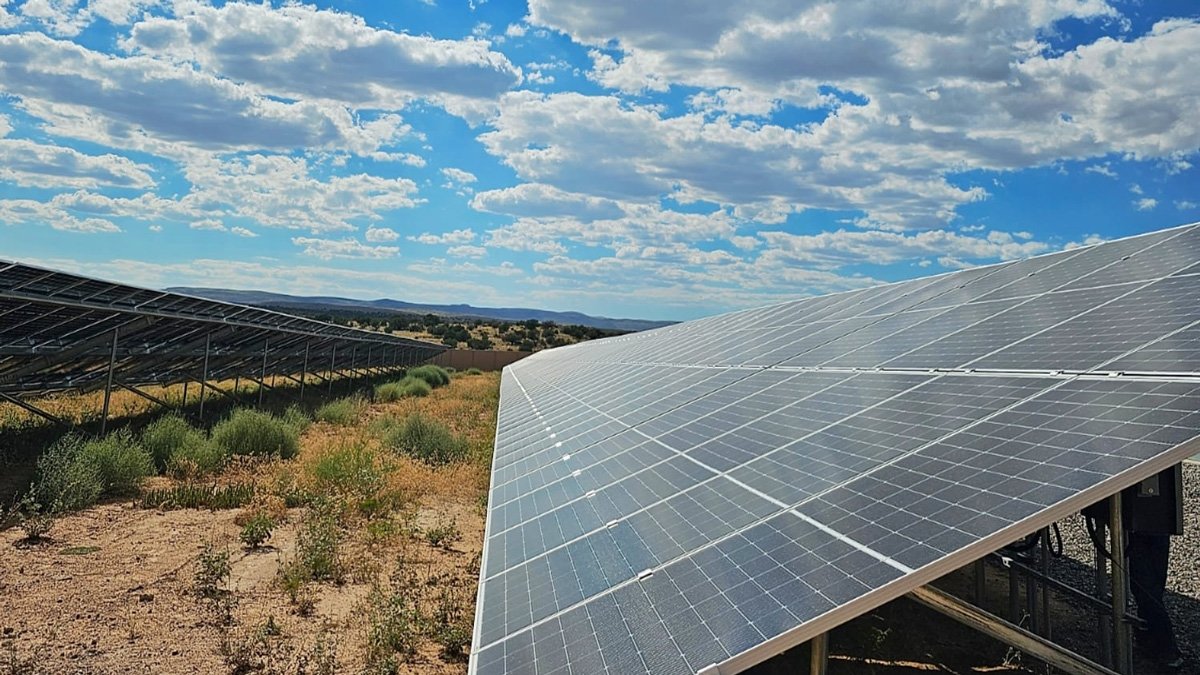Project Overview
Tribe/Awardee
Hualapai Indian Tribe
Location
Peach Springs, AZ
Project Title
Building Resiliency into the Grand Canyon West Micro Grid
Type of Application
Deployment
DOE Grant Number
DE-IE0000128
Project Amounts
DOE: $2,430,000
Awardee: $1,265,158
Total: $3,695,158
Project Status
See project status
Project Period of Performance
Start: 4/1/2021
End: 5/31/2023
NOTE: Project pages are being updated regularly to reflect changes, if any; however, some of the information may be dated.
Summary
Grand Canyon West (GCW) is the primary economic engine that supports the Hualapai Tribe, attracting more than 1 million tourists annually as the home of the world-famous Grand Canyon Skywalk. The goal of the project is to improve the resilience of the non-grid-connected electrical generation system at GCW to withstand short-term disruptions and rising energy costs by installing a 993-killowatt (kW) solar photovoltaic (PV) and 750-kW/1,500-kilowatt hour (kWh) battery storage system. The system will be capable of providing 50% of the annual energy needed at GCW to supplement the existing diesel generators, saving approximately $463,339 per year and an estimated $11,583,475 over the 25-year life of the system.
Project Description
Background
The Hualapai Tribe is located in northwestern Arizona with an enrollment of about 2,400 members. Traditional grid electric service is only available to a small percentage of Reservation lands. The Reservation has two population centers: Peach Springs and Grand Canyon West. A traditional electric grid owned and operated by Mohave Electric Service serves Peach Springs. GCW is served by a Hualapai-owned-and-operated microgrid energized by three CAT 750-kW diesel generators.
In 2014, the Hualapai Tribe received authority to form a Tribal Utility Authority to bring electricity to GCW. Currently, GCW is not connected to the traditional electric grid, and diesel generators provide electric service to each site. The generators have an extremely high operating cost and are prone to go offline for scheduled repairs or due to malfunctions. As development intensified, on-site generators have become impractical. After numerous delays and setbacks involved in connecting to the traditional grid, the Tribe began exploring solar PV as an option again. A feasibility study completed in 2012 showed the potential for solar power, but it was not pursued because the Tribe was intending to connect to the grid. Since then, the energy demands have increased, and the cost of solar PV has decreased to a point where the proposed project is viable.
During this time, the Tribe has also learned of the need to provide reliable energy that can operate the system when the generators malfunction and are unable to produce energy. After the delays in the powerline arose, and in anticipation of the diesel generators reaching the end of their service life in the coming years, the Tribe revisited the idea of using solar PV to power GCW. The Tribe revised a 2012 feasibility study to identify how solar could be integrated into the current microgrid system at GCW. The result showed that a 993-kW solar PV array and 750-kW/1,500-kWh battery system could produce the optimum results for our needs.
Project Objectives
Grand Canyon West is served by a Hualapai-owned-and-operated microgrid energized by three CAT 750-kW diesel generators. The fuel and continuing noncapital operating costs associated with the GCW generator system are very high, with an average operating cost of approximately 36 cents per kWh. This project will reduce ongoing fuel consumption, resulting in a significant decrease in operating costs and a reduction of carbon emissions. Furthermore, the operation of diesel generators produces both noise and air pollution, which have been tolerated out of necessity. The project will enhance the microgrid resilience and reliability by adding a second source of generation to the microgrid. Through this project, Hualapai has the ability to develop a renewable energy resource more in line with its conservation and environmental protection ethos.
The goal of the project is to improve the resilience of the electrical generation system to be able to withstand short-term disruptions and rising energy costs in the future by installing a solar PV array and battery system capable of providing 50% of the annual energy needed at GCW. To overcome the obstacles of high energy costs and low system resilience, the Tribe will deploy a ground-mounted 993-kW solar PV array with 750kW/1,500kWh battery storage that will connect to the microgrid. In the event of a diesel generator failure, the microgrid can operate GCW for up to two hours, or it can operate three essential facilities entirely for 16 hours on battery backup or with the arrays themselves.
Project Scope
To overcome the obstacles of high energy costs and low system resilience, the Tribe will deploy a ground-mounted 993-kW solar PV array with a 750kW/1,500kWh battery storage option that will connect to the existing microgrid at Grand Canyon West. A qualified and experienced contractor will be hired to design and build the solar PV array and battery system, perform the work of integrating and commissioning the energy system, and monitor the system for 12 months.
Project Location
The Hualapai Reservation is situated in a very remote region of northwestern Arizona, with the south rim of the Grand Canyon as its northern border. The Reservation has two population centers: Peach Springs and Grand Canyon West. The project will serve GCW. GCW comprises numerous buildings, including restaurants, gift shops, zip lines, the Skywalk, viewing points, employee housing, a police station, an EMT/fire station, and an airport. The project site is approximately 20 acres, located at Quartermaster Point Road intersection with the main entrance road and close to a microgrid interconnection point.
Project Status
The project was competitively selected under the U.S. Department of Energy Office of Indian Energy’s Fiscal Year 2019 funding opportunity announcement "Energy Infrastructure Deployment on Tribal Lands - 2020" (DE-FOA-0002168) and started in April 2021.
The project status reports provide more information.

Tribal Energy Snapshot: Hualapai Indian Tribe

